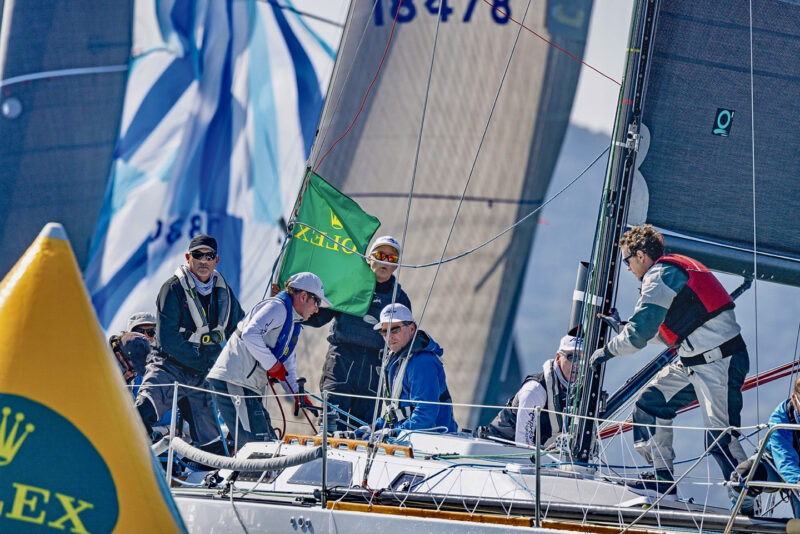
Max Ebb Talks Time and Ratings in ‘A Pox on Both Their Houses’
“Max, how are we doing?” It was a fair enough question, but one I could not answer. I was navigating a very big, very new, and very expensive racing yacht in a very prestigious regatta. Well, actually Lee Helm was calling all the shots; this ride was well above my usual pay grade. Lee had suggested I come along as an “owner interface.” My job was to translate all the mysterious tactical and sail-trim calls to something the owner, who claimed to love sailing but had never actually skippered a race boat of any size, could comprehend.
“It’s very close,” I answered, hedging my bets.
The problem was that we would not know our time allowance relative to other boats until the race was over.
“It’s a 25-mile course,” volunteered the chief mainsail trimmer, without looking down from the rig. “If this were time-on-distance under PHRF, we would have to be two and a half minutes ahead at the finish. I think we’ve got ’em.”
“Except that it’s, like, time-on-time,” Lee added, looking up from her tablet that mirrored the full set of instrumentation. “The wind conditions have been favorable to us, so that means our rating is going to be less favorable by the time the RC sorts it all out after the race. Let’s not count chickens based on time-on-distance.”
“How much time do we give them for a 25-mile course in time-on-time?” asked the owner. He was mainly concerned with only one other boat, his usual archrival. The crew suspected that there was also a side bet involved.
“Depends on the time, not the distance,” I explained. “Think in terms of minutes per hour and seconds per minute of sailing time.”

“The problem,” suggested the mainsail trimmer, “is that we all know the PHRF numbers for most of the boats in the fleet, but we never remember the speed correction factors after the PHRF numbers are converted to time-on-time ratings. I think the blame falls on the PHRF Committee. They should publish ratings as time-on-time speed factors instead of time-on-distance numbers. Those are the numbers we should be conversant with. It would save a step converting to time-on-time.”
“Good point,” I agreed. “I know my own PHRF rating, and I know the ratings for all the boats I usually race against, so if I know the distance I can work out how much time I have to give each competitor, all in my head.”
“But there’s, like, a problem doing that with time-on-time,” Lee explained. “Time-on-distance numbers can be subtracted from each other to get time allowance per mile from any one boat relative to any other. For example, if my rating is 126, and I’m racing against a boat that rates 168, I know I have to give the other boat 42 seconds per mile. Can’t do that with time-on-time speed factors! Those ratings translate to… let’s see… 0.962 and 0.905, using the usual formula. The difference is 0.057, but that doesn’t tell me anything. I have to find the ratio between the two speed factors, and then convert to seconds per hour, and like, even I can’t do that in my head.”
“Still,” insisted the trimmer, “we would be one step closer if the ratings were published as speed factors.”
Continue reading in the March issue of Latitude 38.
